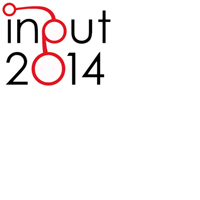Its System to Manage Parking Supply: Considerations on Application to the “Ring” in the City of Brescia
Abstract
Brescia’s downtown is outlined by link roads built up at the Venetian walls, known as “Ring. The “Ring” is characterized by high traffic flows, as well as by the presence of several paid parking lots located on and off street. Furthermore, several facilities are located on these link roads. Nowadays city of Brescia is equipped with an ITS system able to manage off street parking spaces, allowing the share of information about parking availability to potential users, through the use of variable message panels. The parking supply issue and its management are strongly felt by citizens, as well as many other cities communities, whether European or not. This contribution aims to encourage an integration of the existing ITS system for the off street parking management with additional devices, which allow to manage also the on street paid parking supply located on “Ring” roads. The minimization of so-called “shared traffic” component of traffic flows, as well as the increase of road safety, in the context of a medium-sized Italian city are the main objectives of the ITS system integration. ITS asset chosen for the Brescia case study springs from the analysis of some non-European experiences about on street parking management (for example, San Francisco and Boston) and certainly can be considered suitable for the parking supply management of the whole city. It could become the main starting point in Italian cities for the application of performance based parking pricing, widely experienced in many U.S. cities.Downloads
References
Bayless S.H., Neelakantan R. (2012), Smart parking and the connected consumer – Opportunities for facility operators and municipalities, ITS American Research. http://www.itsa.org
Boston Transport Department (2013), Boston Complete Streets Guidelines, Boston: Blurb
City of Boston (2014), Boston taking a new approach to traffic and parking challenges. http://www.cityofboston.gov/news
Dalla Chiara B. (2010), Telematica per i trasporti, Forlì: Egaf
Dalla Chiara B. (eds.) (2013), ITS nei trasporti stradali – Tecnologie, metodi e applicazioni, Forlì: Egaf
Federal Highway Administration (2007), Advanced parking management systems: a cross-cutting study. http://www.its.dot.gov
Giuffrè T., Siniscalchi S.M., Tesoriere G. (2012), A novel architecture of parking management for smart cities, SIIV – V International Conference “Sustainability of Road Infrastructures”, Procedia – Social and Behavioral Science, 53: 16-28
Kianpisheh A., Mustaffa N. Limtrairut P., Keikhosrokiani P. (2012), Smart parking (SPS) Architecture Using Ultrasonic Detector, International Journal of Software Engineering And Its Application, 6, 3: 51-58
Maffietti M. (2011), Servizi pubblici, offerta e domanda di sosta: un contributo al piano territoriale degli orari, Thesis discussed at University of Brescia
Maternini G. (eds.) (2014), Trasporti e città – Mobilità e pianificazione urbana, Forlì: Egaf
San Francisco Municipal Transportation Agency (2011), SFpark: putting theory into practice – post-lunch implementation summary and lessons learned. http://sfpark.org
Shoup D. (2011), the high cost of free parking, Chicago: Planners Press
US Department of Transportation – Research and Innovative Systems Joint Program Office (2010) ITS technology adoption and observed market trends from ITS deployment tracking – Final report. http://www.its.dot.gov.

Copyright (c) 2014 Tema. Journal of Land Use, Mobility and Environment

This work is licensed under a Creative Commons Attribution 4.0 International License.
Authors who publish in this journal agree to the following:
1. Authors retain the rights to their work and give in to the journal the right of first publication of the work simultaneously licensed under a Creative Commons License - Attribution that allows others to share the work indicating the authorship and the initial publication in this journal.
2. Authors can adhere to other agreements of non-exclusive license for the distribution of the published version of the work (ex. To deposit it in an institutional repository or to publish it in a monography), provided to indicate that the document was first published in this journal.
3. Authors can distribute their work online (ex. In institutional repositories or in their website) prior to and during the submission process, as it can lead to productive exchanges and it can increase the quotations of the published work (See The Effect of Open Access)
